What is radiative transfer theory?¶
- The properties of the leaves and the canopy are combined
- For analysis, untangle response of the leaves and canopy.
- We want to understand the processes and properties that control sunlight being reflected by an e.g. canopy.
- RT tries to derive a physical description of the fate of photons as they are scattered and absorbed within a canopy.
- Let's start with leaves
- ... then we'll embed them in a canopy.
Modelling leaf optical properties¶
- Photon hits a leaf, it can be
- absorbed ($A$),
- scattered ($R$), or
- transmitted ($T$).
- From energy conservation $A+R+T=1$
- Implicit dependence on wavelength ($\lambda$)
Dicot¶

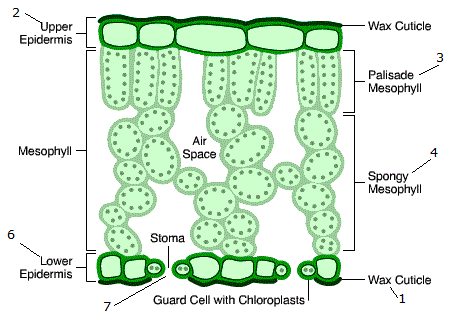
Leaf reflectance: directional aspects¶

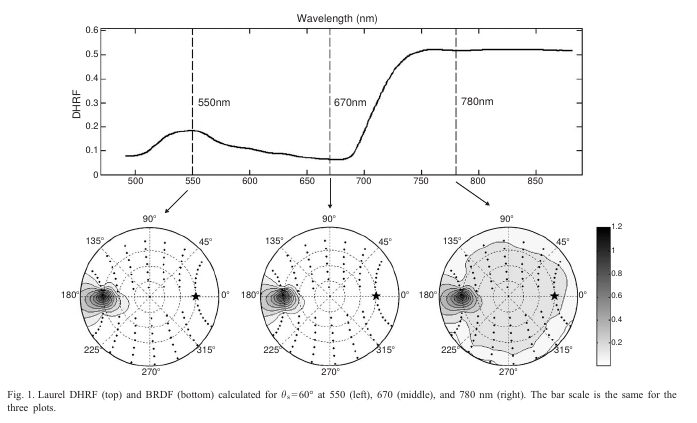
- The wax cuticle is bright, and scatters incoming radiation with a strong directional signal in the specular direction, $R_s$.
- Specular response broadened by the leaf's surface microtopography.
- At interfaces between different materials, photons are scattered.
- Internal contribution $R_d$ is Lambertian (isotropic), the result of photons interacting with internal leaf structure and pigments.
Leaf reflectance: spectral aspects¶
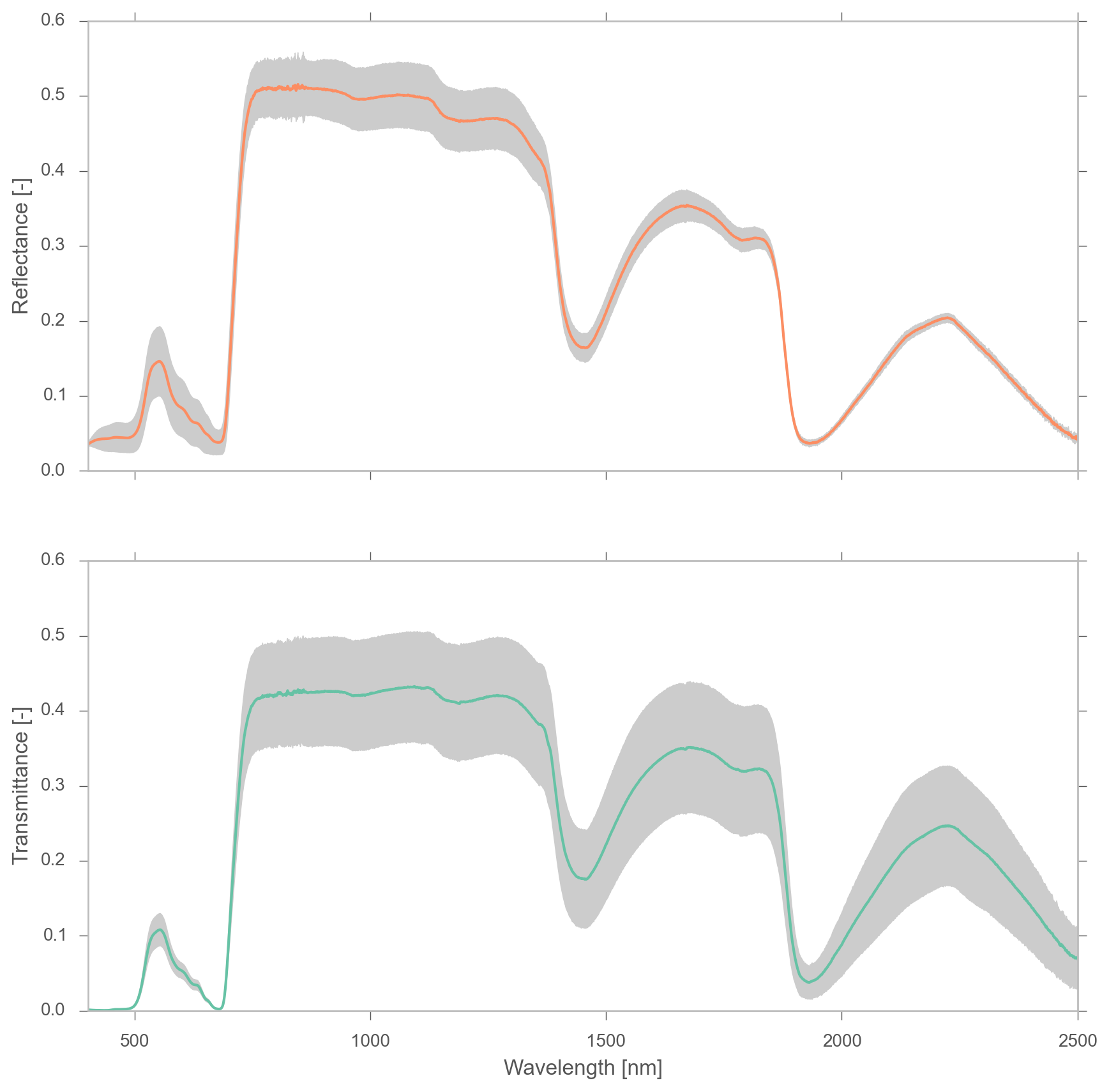 Main spectral regions:
Main spectral regions:
- VIS $[400-700nm]$: absorption of radiation in green leaves. Chlorophyll, carotenoids, ..
- NIR $[700-1100nm]$: multiple scattering due to air-cell wall interfaces,
- SWIR $[>1100nm]$: mostly water absorption, note peaks at 1450, 1950 and 2500 nm.
- We will focus on the Lambertian effect
- This is a consequence of internal photon scattering
- therefore, it should tell us something about the internal structure and composition of the leaf.
- Although specular component is important, it is often neglected!
- We can model it by considering the internal reflections of a bean inside a plate:

- Solution to plate model given Airy in 1833, applied to leaves by Allen and others in 1970s
- We can write a fairly compact expression for the reflectance and transmittance of the plate that only depends on
- The index of reflection of the plate, $n$, and
- The absorption coefficient $k$.
- The model works surprisingly well for monocots, but fails for more complex leaves or senescent leaves.
A multilayer leaf model¶
- Numerous photon scatter events take place at the air-cell boundaries within the leaf mesophyll
- So extend model to have a stack of plates separated by air interfaces to account for these interactions

- Problem solved by Stokes in 1862.
- Can calculate leaf reflectance and transmittance of $N$ layers as a function of a single layer ($R(1)$ and $T(1)$):
where
$$ \begin{align} a &=\frac{1+R^{2}(1)-T^{2}(1) + \Delta}{2R(1)}\\ b &=\frac{1-R^{2}(1)+T^{2}(1) + \Delta}{2T(1)}\\ \Delta &= \sqrt { (T^{2}(1)-R^{2}(1)-1)-4R^{2}(1)}. \end{align} $$- Can make number of layers a real number not an integer (e.g. 1.3 layers)
- $\Rightarrow$ PROSPECT
- PROSPECT predicts leaf reflectance and transmittance as a function of
- $N$ (the number of layers $\sim \left[1.5-2.5\right]$, a sort of internal complexity of the leaf parameter)
- Calculates $k$ from the concentrations of
- Chlorophyll a+b
- Leaf water
- "Brown pigment"
- "Dry matter"
- Carotenoids
Chlorophyll a+b specific absorption¶
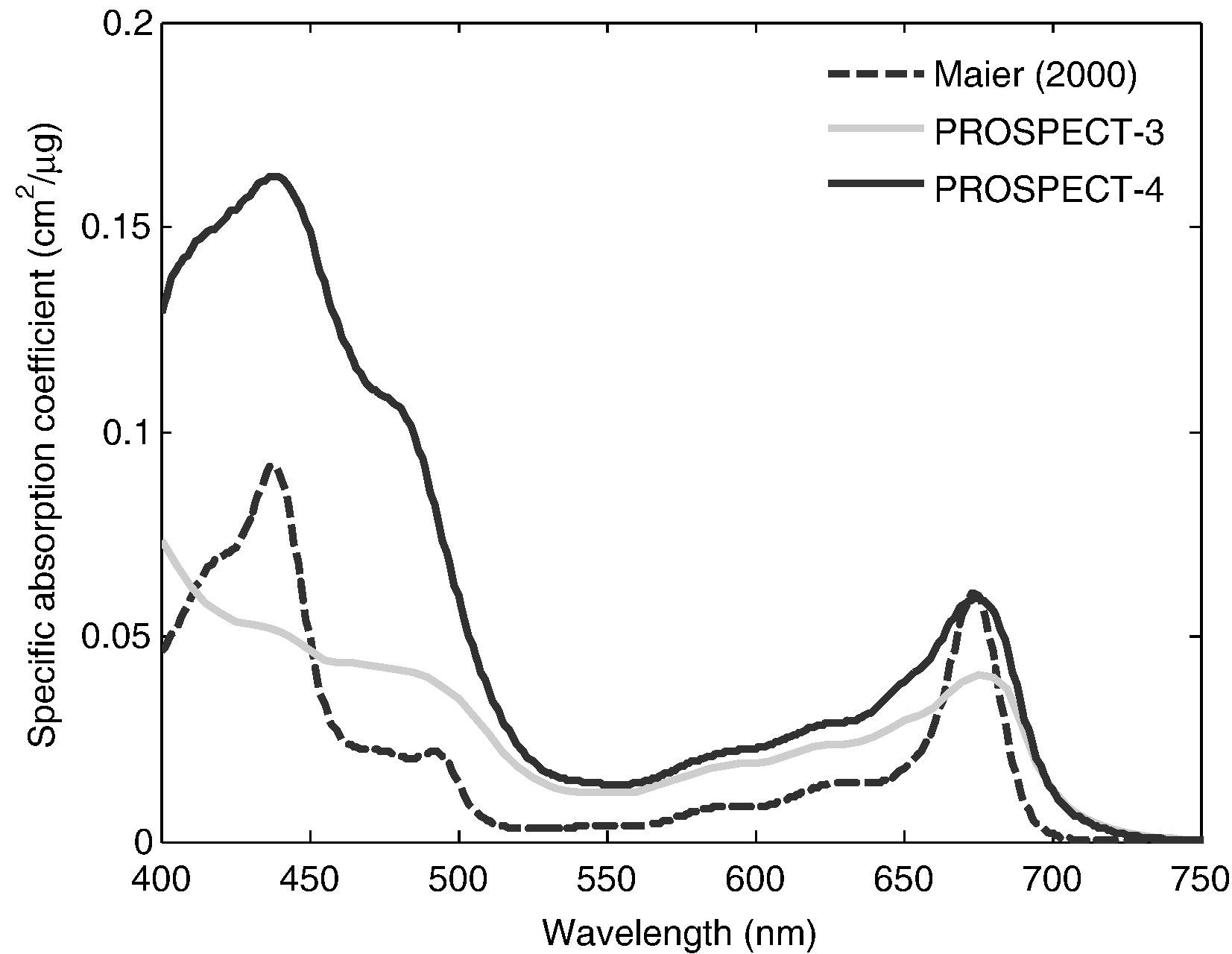
Carotenoids specfic absorption¶
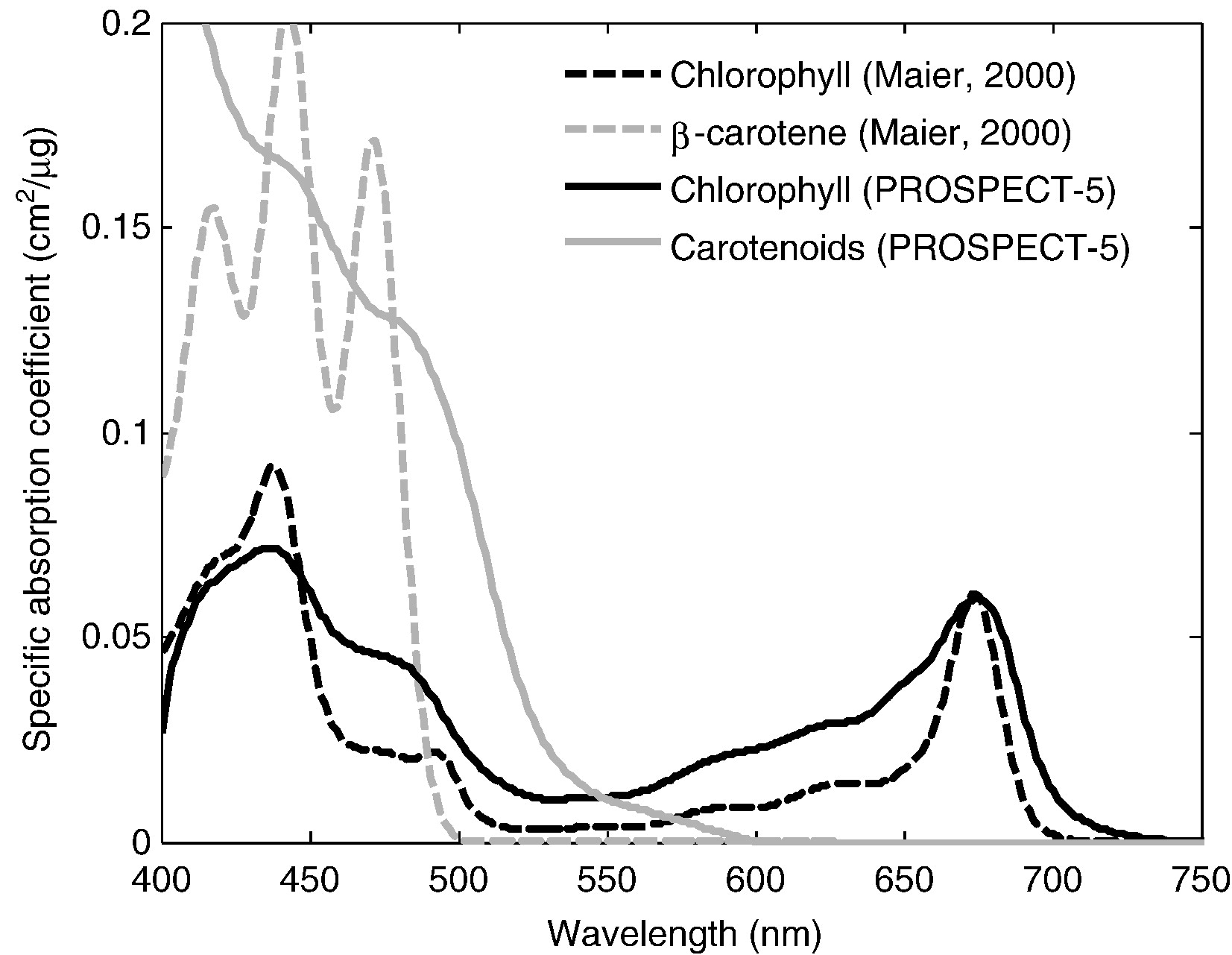
Dry matter specific absorption¶
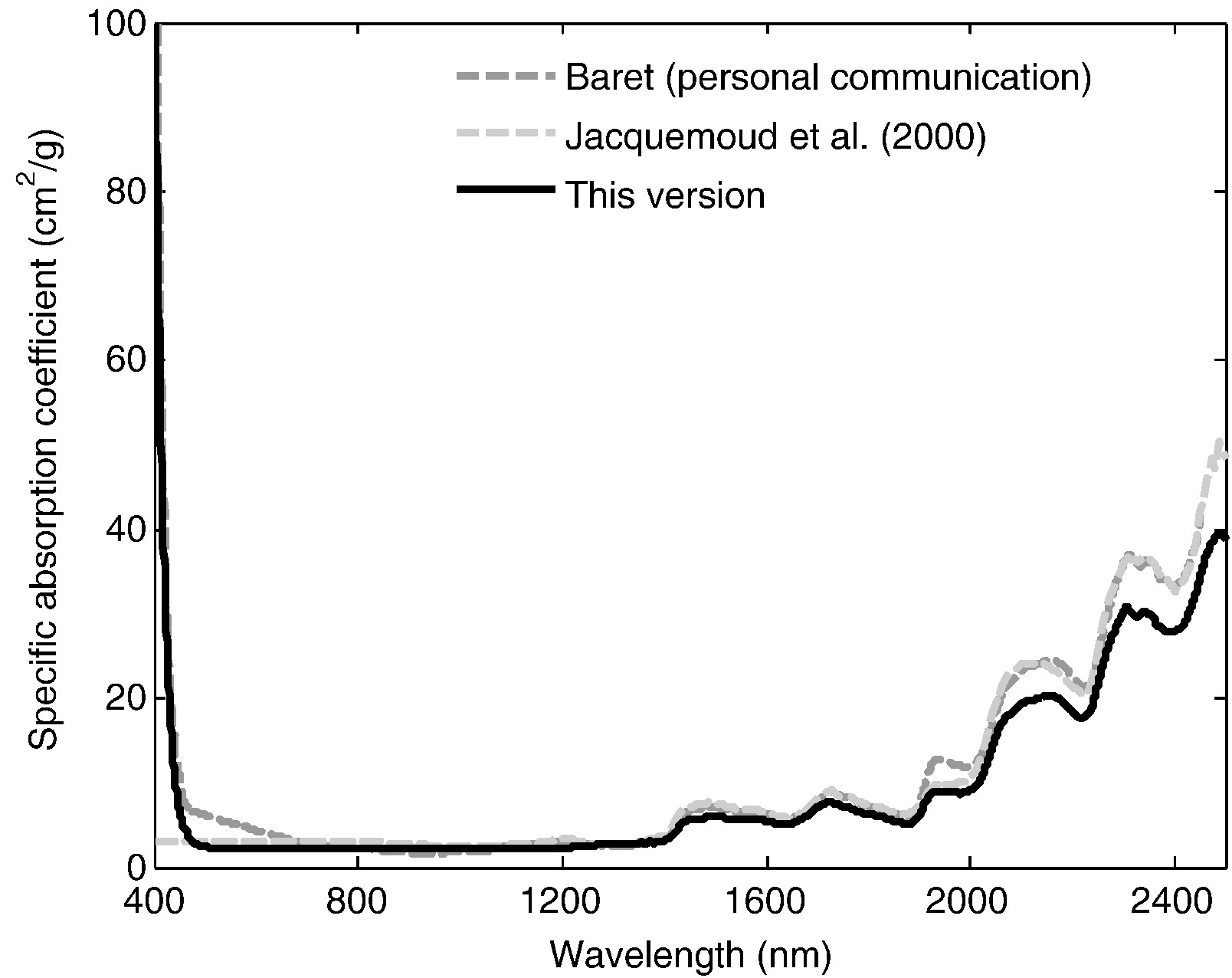
Water specific absorption¶
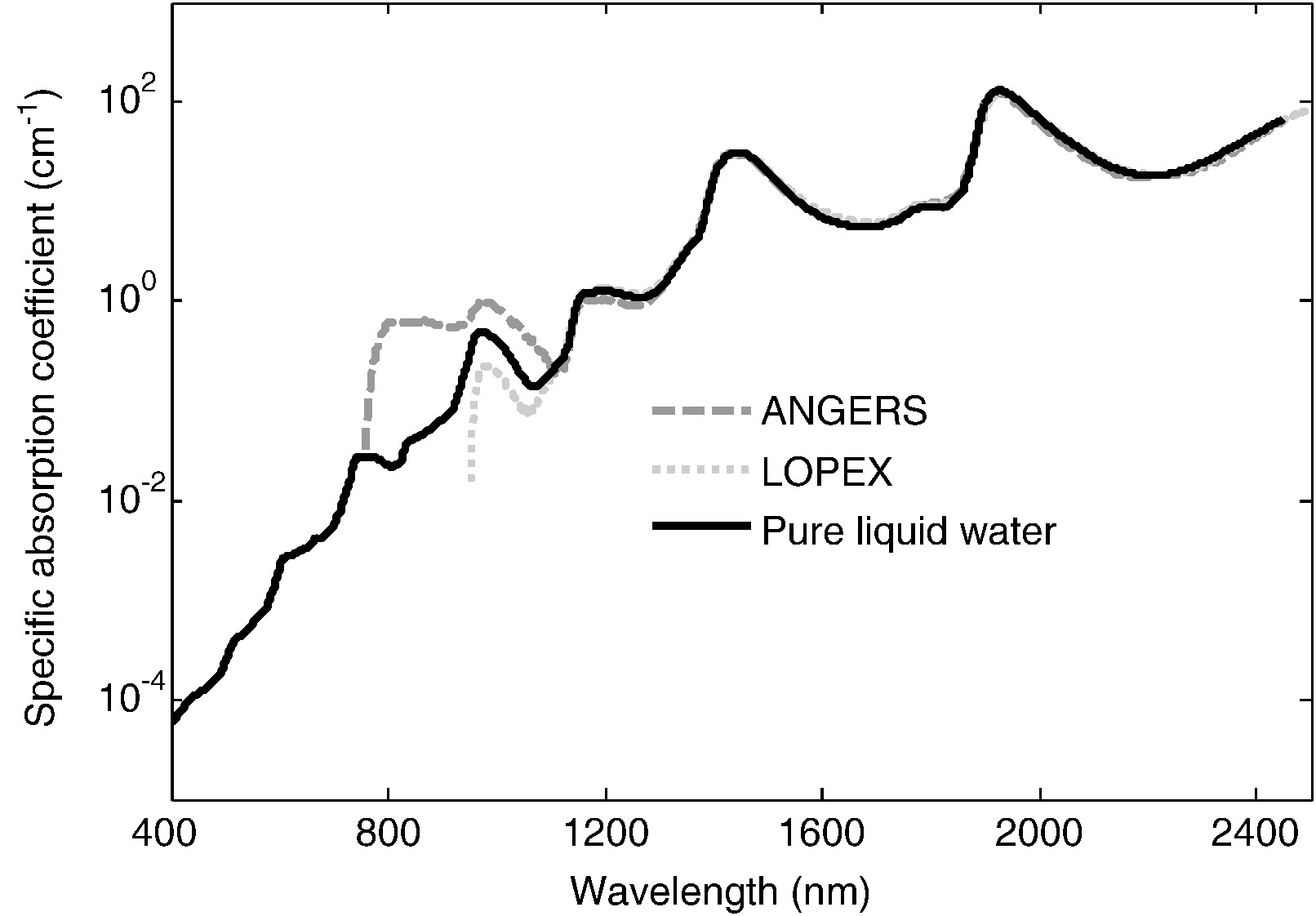
- Cellulose and lignine as well as proteins have particular absorption fingerprints
- However, absorption coincides with water absorption
- Hence these responses lumped into "Dry matter".
Recap¶
- Leaf BRDF
- Directional component due to surface specular reflection
- Lambertian component due to internal interactions
- Leaves can be modelled as stacks of plates
- Parsimonious model with a handful of parameters
- PROSPECT:
- N layers ($N\in R$)
- Chlorophyll concentration $(\mu gcm^{-2})$
- Carotenoids $(\mu gcm^{-2})$
- Equivalent water thickness $(cm)$)
- Dry matter $(gcm^{-2})$




